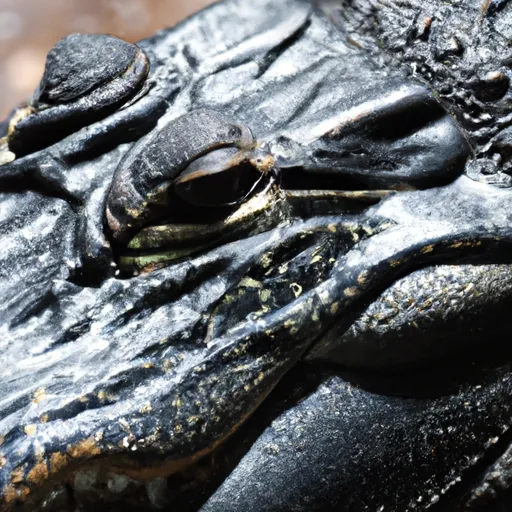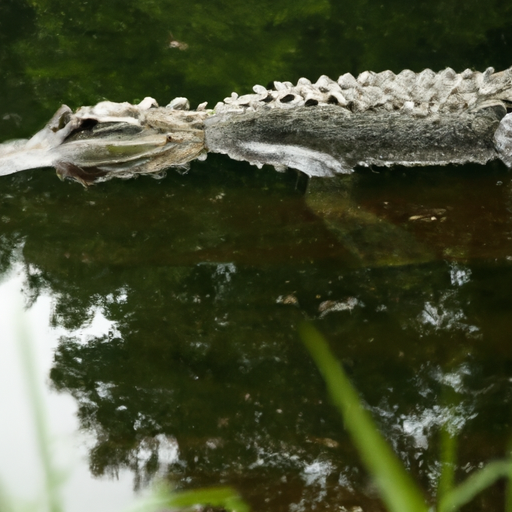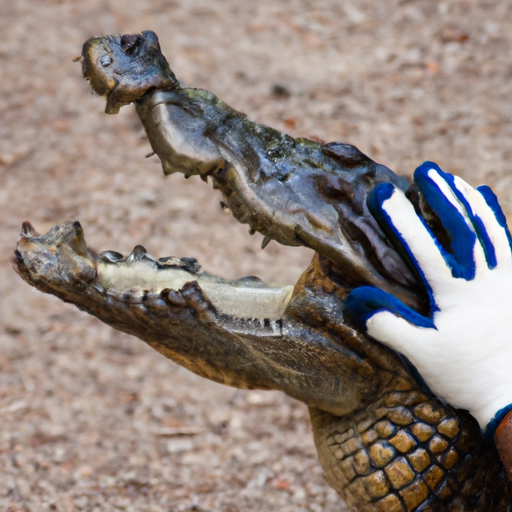So, you’ve always been a bit unsure about whether alligators are classified as reptiles or amphibians, huh? It’s a common confusion, considering these creatures seem to share characteristics of both.
Well, let’s settle this debate once and for all! In this article, we’ll explore the fascinating world of alligators and uncover the true answer to the age-old question: are alligators reptiles or amphibians?
Get ready to discover some surprising facts about these incredible creatures!

Introduction
When it comes to classifying animals, it can sometimes be a bit confusing. Are alligators reptiles or amphibians?
It’s a question that many people have wondered about. In order to understand the answer, we first need to define what reptiles and amphibians are and then look at the characteristics of each group.
By examining their physical features, taxonomical classification, habitat, reproduction, and more, we can gain a deeper understanding of these fascinating creatures.
Definition of Reptiles and Amphibians
Reptiles
Reptiles are a group of cold-blooded vertebrates that are characterized by their scaly skin, four legs (or absence of legs in some species), and ability to lay shelled eggs.
They are ectothermic, meaning that they rely on external sources of heat to regulate their body temperature.
Reptiles have internal fertilization, which means that the eggs are fertilized inside the female’s body before being laid.
Amphibians
Amphibians, on the other hand, are also cold-blooded vertebrates but they are characterized by their ability to live both on land and in water.
They have moist skin, which allows them to absorb oxygen and stay hydrated. Amphibians are also ectothermic and have external fertilization, meaning that the eggs are fertilized outside the female’s body.
Characteristics of Reptiles
Scales and Skin
One of the key identifying features of reptiles is their scaly skin. These scales provide protection and help reduce water loss through evaporation. The scales can vary in size, shape, and texture depending on the species. Reptiles shed their skin periodically to allow for growth and to get rid of any parasites.
Ectothermic
Reptiles are ectothermic, which means they rely on external sources of heat, such as the sun or warm rocks, to regulate their body temperature. Unlike mammals and birds that are able to generate their own body heat through metabolism, reptiles are more reliant on their environment for thermoregulation.
Internal Fertilization
Reptiles have internal fertilization, which means the male reptile inserts the sperm into the female’s reproductive tract. This allows for greater protection of the eggs and increases the chances of successful fertilization. Some reptiles, such as snakes and lizards, have developed elaborate courtship rituals to attract a mate and ensure successful reproduction.
Lay Shelled Eggs
One of the most well-known characteristics of reptiles is their ability to lay shelled eggs. These eggs provide a protective environment for the developing embryo and are laid on land. The shells are leathery or hard depending on the species and allow for gas exchange while preventing dehydration.
Characteristics of Amphibians
Moist Skin
Unlike reptiles, amphibians have moist skin that allows for gas exchange and aids in respiration. The skin is permeable, meaning that oxygen and other gases can pass through it. This is why amphibians often need to live in or near water since their skin can easily dry out on land.
Ectothermic
Similar to reptiles, amphibians are ectothermic, relying on external sources of heat to regulate their body temperature. This is why you often find amphibians basking in the sun or burrowing underground to find warmth.
External Fertilization
Unlike reptiles, amphibians have external fertilization. This means that the female releases her eggs into the environment and the male fertilizes them with his sperm. This usually occurs in water where the eggs are laid and subsequently develop.
Lay Jelly-like Eggs
Amphibians lay jelly-like eggs that are typically found in water, providing a moist environment for the embryos to develop. These eggs lack the protective hard shell that reptiles have and are more susceptible to drying out. The jelly-like substance helps to retain moisture and protect the developing embryos.

Alligators – Reptiles or Amphibians?
Now that we have discussed the characteristics of reptiles and amphibians, we can determine where alligators fit into the picture. Alligators are indeed reptiles. They possess all the key characteristics of reptiles, including scaly and impermeable skin, internal fertilization, and the ability to lay shelled eggs on land. They are ectothermic and rely on external sources of heat to maintain their body temperature. Alligators belong to the reptilian class, order, and family and have no characteristics that align them with the amphibian group.
Taxonomical Classification
Class Reptilia
Alligators, along with other reptiles, belong to the class Reptilia. This class includes many diverse groups such as lizards, snakes, turtles, and crocodiles. Reptiles are further classified based on various characteristics such as their scale type, reproductive strategies, and habitats.
Order Crocodylia
Within the class Reptilia, alligators are classified under the order Crocodylia, which includes crocodiles, alligators, caimans, and gharials. This order is known for its semi-aquatic nature and its ability to thrive in both freshwater and saltwater environments.
Family Alligatoridae
Finally, alligators belong to the family Alligatoridae, which consists of two species: the American alligator (Alligator mississippiensis) and the Chinese alligator (Alligator sinensis). Both species are similar in many ways, including their physical characteristics and reproductive behaviors.
Physical Characteristics
Scales
One of the most distinctive features of alligators is their scaly skin. These scales, composed of keratin, provide protection against predators and help to reduce water loss. The scales are rough to the touch and vary in color, usually ranging from dark green to black, allowing them to blend seamlessly with their environment.
Moisture Retention
Although alligators are reptiles, they have a unique adaptation to retain moisture. Their skin has small glands that secrete oils and allow them to retain water, especially when they spend extended periods in dry conditions. This adaptation helps them to survive in a wide range of environments.
Teeth
Alligators are well-known for their formidable teeth. Their upper and lower jaws house numerous sharp teeth that are typical of reptiles. These teeth are used for capturing and holding prey, as well as tearing it apart. Alligators continually replace their teeth throughout their lives, ensuring they always have a fresh set of sharp teeth for hunting.
Respiration
Like other reptiles, alligators have lungs for breathing air. However, they also possess a unique adaptation known as a “fringed valve” in their throat. This valve allows them to keep their mouth open while submerged, enabling them to stay hidden while still being able to breathe. This adaptation comes in handy during aquatic hunting or when they need to remain motionless in the water.
Habitat and Distribution
Alligators are primarily found in freshwater environments such as rivers, lakes, swamps, and marshes. They are native to the southeastern United States, particularly Florida and Louisiana. However, alligators can also be found in other parts of the world, such as China’s Yangtze River. They are well-adapted to their aquatic habitats and can often be seen basking on the shores to regulate their body temperature.
Reproduction and Lifecycle
Courtship and Mating
During spring, male alligators engage in elaborate courtship displays to attract females. These displays involve vocalizations, head-slapping against the water, and other physical behaviors that demonstrate their strength and dominance. If successful, the female will choose a mate and the pair will engage in a “mating dance” before copulation occurs.
Egg-laying
After mating, the female alligator will deposit her eggs in a mound or nest made of vegetation, which provides insulation and protection. This nest is typically built on land, away from the water’s edge. The female will carefully regulate the temperature of the nest by adding or removing vegetation to ensure optimal conditions for incubation.
Incubation and Hatching
Alligator eggs have a relatively long incubation period, usually lasting around 60 to 70 days.
The temperature at which the eggs are kept during incubation determines the sex of the offspring, with higher temperatures favoring males and lower temperatures favoring females.
Once the eggs are ready to hatch, the baby alligators use an egg tooth (a sharp projection on their snout) to break open the eggshell.
Growth and Development
After hatching, the baby alligators stay close to the nest while they grow and develop. They are highly vulnerable at this stage and are protected by the female alligator.
As they grow, they gradually venture farther from the nest and become more independent.
Alligators grow at a relatively slow rate and can take anywhere from 6 to 10 years to reach maturity, depending on various factors such as temperature and food availability.
Final Thoughts
In conclusion, alligators are reptiles, not amphibians. They possess the key characteristics of reptiles, including scaly skin, internal fertilization, and the ability to lay shelled eggs.
Alligators, along with other reptiles, are an essential part of our ecosystem and have successfully adapted to various habitats around the world.
Understanding the unique traits and behaviors of these fascinating creatures allows us to appreciate the diversity of the animal kingdom and the importance of their conservation.



